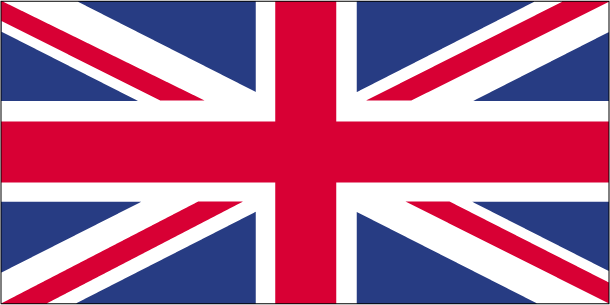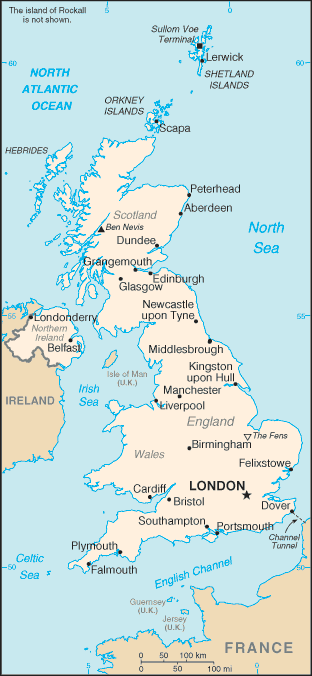United Kingdom Google maps and Driving Directions
Get free driving directions, Google maps, traffic information for the United Kingdom, and London (GPS: 51 30 N 0 05 W), the capital city of the country located in (the) Western Europe, islands – including the northern one-sixth of the island of Ireland – between the North Atlantic Ocean and the North Sea; northwest of France.
Find any address in London on the Google map of the United Kingdom (UK) with ease or calculate your up to date itinerary to and from the United Kingdom or its neighboring counties like Ireland.
Sightseeing and exploring in Europe starts here, thanks to Google because its Earth Engine combines a multi-petabyte catalog of updated satellite imagery and geospatial datasets with planetary-scale analysis capabilities. Wonder the world, use the satellite map function of the Google maps to explore or see differences on the Earth’s surface, inland, or the surrounding areas of the United Kingdom.
Google Maps United Kingdom
Separated from continental Europe by the English Channel, the UK consists of Great Britain (England, Wales, and Scotland), several smaller islands, and Northern Ireland.
The United Kingdom is mostly rugged hills and low mountains; level to rolling plains in east and southeast.
The map above fully covers the United Kingdom with its road routes from cities to towns, road intersections in any region, provinces, prefectures, also with free driving directions in London or to the neighboring towns and countries. To look at the detailed map about a particular quarter in London, please click on the area and zoom to the place you are interested in the Google maps of the United Kingdom (UK).
Be creative, use the extras of this Google map; This is a detailed, clear, zoomable, large road map of the United Kingdom with its administrative divisions; England: 27 two-tier counties, 32 London boroughs and 1 City of London or Greater London, 36 metropolitan districts, 56 unitary authorities (including 4 single-tier counties*)two-tier counties: Buckinghamshire, Cambridgeshire, Cumbria, Derbyshire, Devon, Dorset, East Sussex, Essex, Gloucestershire, Hampshire, Hertfordshire, Kent, Lancashire, Leicestershire, Lincolnshire, Norfolk, North Yorkshire, Northamptonshire, Nottinghamshire, Oxfordshire, Somerset, Staffordshire, Suffolk, Surrey, Warwickshire, West Sussex, WorcestershireLondon boroughs and City of London or Greater London: Barking and Dagenham, Barnet, Bexley, Brent, Bromley, Camden, Croydon, Ealing, Enfield, Greenwich, Hackney, Hammersmith and Fulham, Haringey, Harrow, Havering, Hillingdon, Hounslow, Islington, Kensington and Chelsea, Kingston upon Thames, Lambeth, Lewisham, City of London, Merton, Newham, Redbridge, Richmond upon Thames, Southwark, Sutton, Tower Hamlets, Waltham Forest, Wandsworth, Westminstermetropolitan districts: Barnsley, Birmingham, Bolton, Bradford, Bury, Calderdale, Coventry, Doncaster, Dudley, Gateshead, Kirklees, Knowlsey, Leeds, Liverpool, Manchester, Newcastle upon Tyne, North Tyneside, Oldham, Rochdale, Rotherham, Salford, Sandwell, Sefton, Sheffield, Solihull, South Tyneside, St. Helens, Stockport, Sunderland, Tameside, Trafford, Wakefield, Walsall, Wigan, Wirral, Wolverhamptonunitary authorities: Bath and North East Somerset, Blackburn with Darwen, Bedford, Blackpool, Bournemouth, Bracknell Forest, Brighton and Hove, City of Bristol, Central Bedfordshire, Cheshire East, Cheshire West and Chester, Cornwall, Darlington, Derby, Durham County*, East Riding of Yorkshire, Halton, Hartlepool, Herefordshire*, Isle of Wight*, Isles of Scilly, City of Kingston upon Hull, Leicester, Luton, Medway, Middlesbrough, Milton Keynes, North East Lincolnshire, North Lincolnshire, North Somerset, Northumberland*, Nottingham, Peterborough, Plymouth, Poole, Portsmouth, Reading, Redcar and Cleveland, Rutland, Shropshire, Slough, South Gloucestershire, Southampton, Southend-on-Sea, Stockton-on-Tees, Stoke-on-Trent, Swindon, Telford and Wrekin, Thurrock, Torbay, Warrington, West Berkshire, Wiltshire, Windsor and Maidenhead, Wokingham, YorkNorthern Ireland: 5 borough councils, 4 district councils, 2 city councilsborough councils: Antrim and Newtownabbey; Ards and North Down; Armagh, Banbridge, and Craigavon; Causeway Coast and Glens; Mid and East Antrimdistrict councils: Derry and Strabane; Fermanagh and Omagh; Mid Ulster; Newry, Murne, and Downcity councils: Belfast; Lisburn and CastlereaghScotland: 32 council areascouncil areas: Aberdeen City, Aberdeenshire, Angus, Argyll and Bute, Clackmannanshire, Dumfries and Galloway, Dundee City, East Ayrshire, East Dunbartonshire, East Lothian, East Renfrewshire, City of Edinburgh, Eilean Siar (Western Isles), Falkirk, Fife, Glasgow City, Highland, Inverclyde, Midlothian, Moray, North Ayrshire, North Lanarkshire, Orkney Islands, Perth and Kinross, Renfrewshire, Shetland Islands, South Ayrshire, South Lanarkshire, Stirling, The Scottish Borders, West Dunbartonshire, West LothianWales: 22 unitary authoritiesunitary authorities: Blaenau Gwent, Bridgend, Caerphilly, Cardiff, Carmarthenshire, Ceredigion, Conwy, Denbighshire, Flintshire, Gwynedd, Isle of Anglesey, Merthyr Tydfil, Monmouthshire, Neath Port Talbot, Newport, Pembrokeshire, Powys, Rhondda Cynon Taff, Swansea, The Vale of Glamorgan, Torfaen, Wrexham.
The interactive map above is also may be used as the satellite map of the United Kingdom or as a reverse search map for finding an address from its GPS coordinates.
The United Kingdom, consisting of Great Britain (England, Wales, and Scotland ) and Northern Ireland, is twice the size of New York State. England, in the southeast part of the British Isles, is separated from Scotland on the north by the granite Cheviot Hills from them the Pennine chain of uplands extends south through the center of England, reaching its highest point in the Lake District in the northwest. To the west along the border of Wales – a land of steep hills and valleys are the Cambrian Mountains, while the Cotswolds, a range of hills in Gloucestershire, extend into the surrounding shires. Significant rivers flowing into the North Sea are the Thames, Humber, Tees, and Tyne. In the west are the Severn and Wye, which empty into the Bristol Channel and are navigable, as are the Mersey and Ribble.
The United Kingdom (area: 242 900 sq km / 93 784,18 sq mi), where the official language is English, lying in Europe and using the currency; British pound (GBP), set their clock to UTC 0. That means they are 5 hours ahead of Washington DC during Standard Time in London, the capital. Note to the time difference: Daylight saving time: +1hr begins last Sunday in March; ends last Sunday in October. Note: applies to the United Kingdom proper not to its overseas dependencies or territories.
The climate in the United Kingdom; Generally mild, temperate, and highly changeable. Rain is relatively well distributed throughout the year. The west is generally wetter than the east, and the south warmer than the north. Winter snow is common in upland areas.
Geography in a nutshell; Rugged uplands dominate the landscape of Scotland, Wales, and northern England. All of the peaks in the United Kingdom over 4000 ft (1219 m) are in highland Scotland. The Pennine mountains, known as the “backbone of England,” run the length of northern England. Lowland England rises into several ranges of rolling hills, and there is an interconnected system of rivers and canals. Over 600 islands, many uninhabited, lie west and north of the Scottish mainland.
Click here for more detailed information about the United Kingdom.
Driving directions the United Kingdom
The Google maps and Google Satellite maps of the United Kingdom above showing the country, located next to Ireland. For your further reference, the latitude and longitude coordinates of the United Kingdom are 54 00 N, 2 00 W , while the capital, London found at 51 30 N 0 05 W.
When you are traveling around the United Kingdom, London, or its other cities, use this routing tool, providing up to date route planning service free of charge.
Look no further; get accurate driving directions in the United Kingdom, Europe, by filling the route planner form below.

